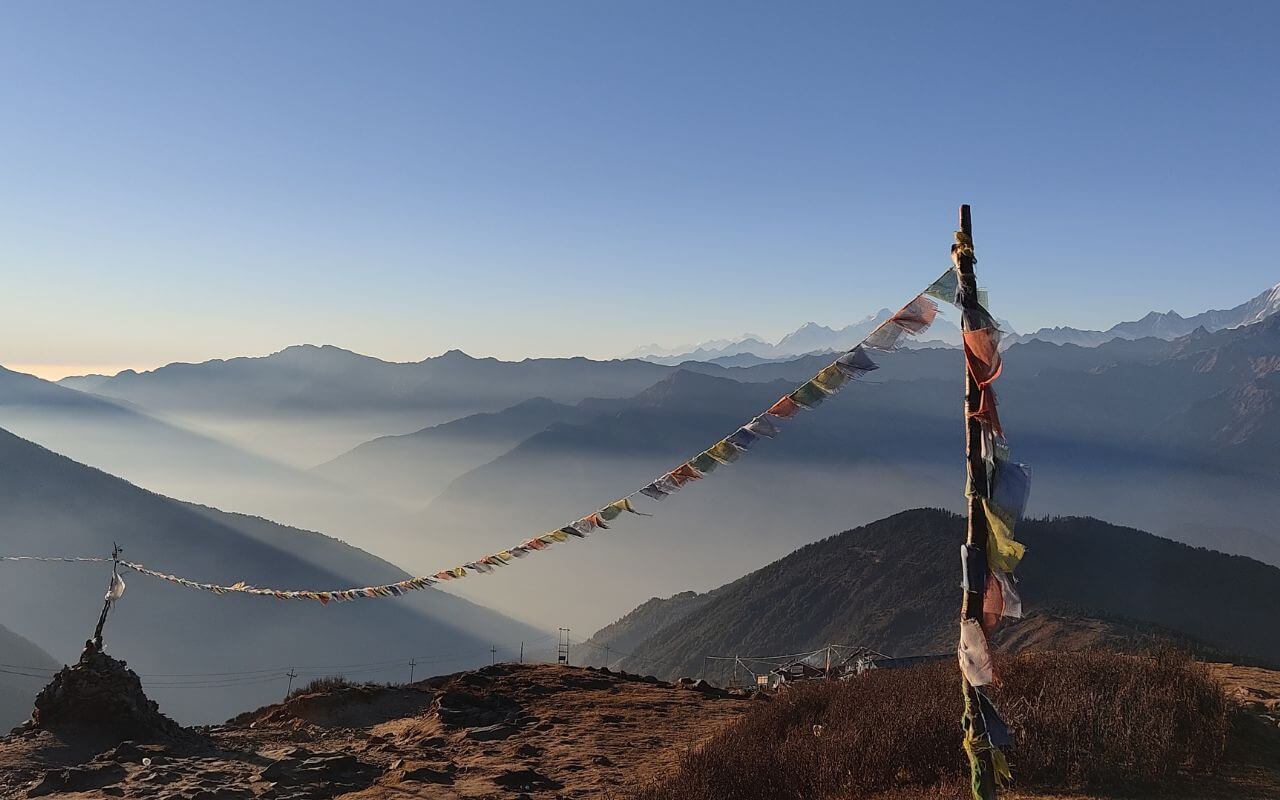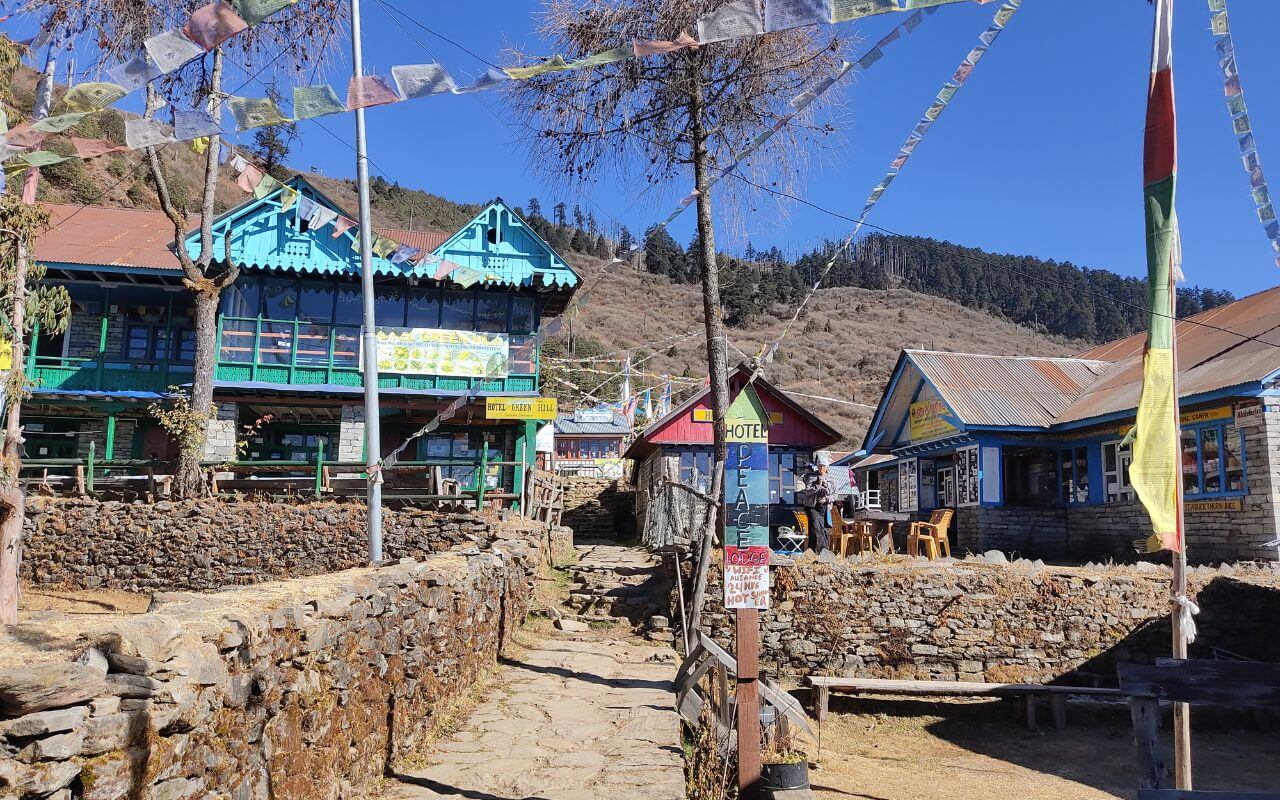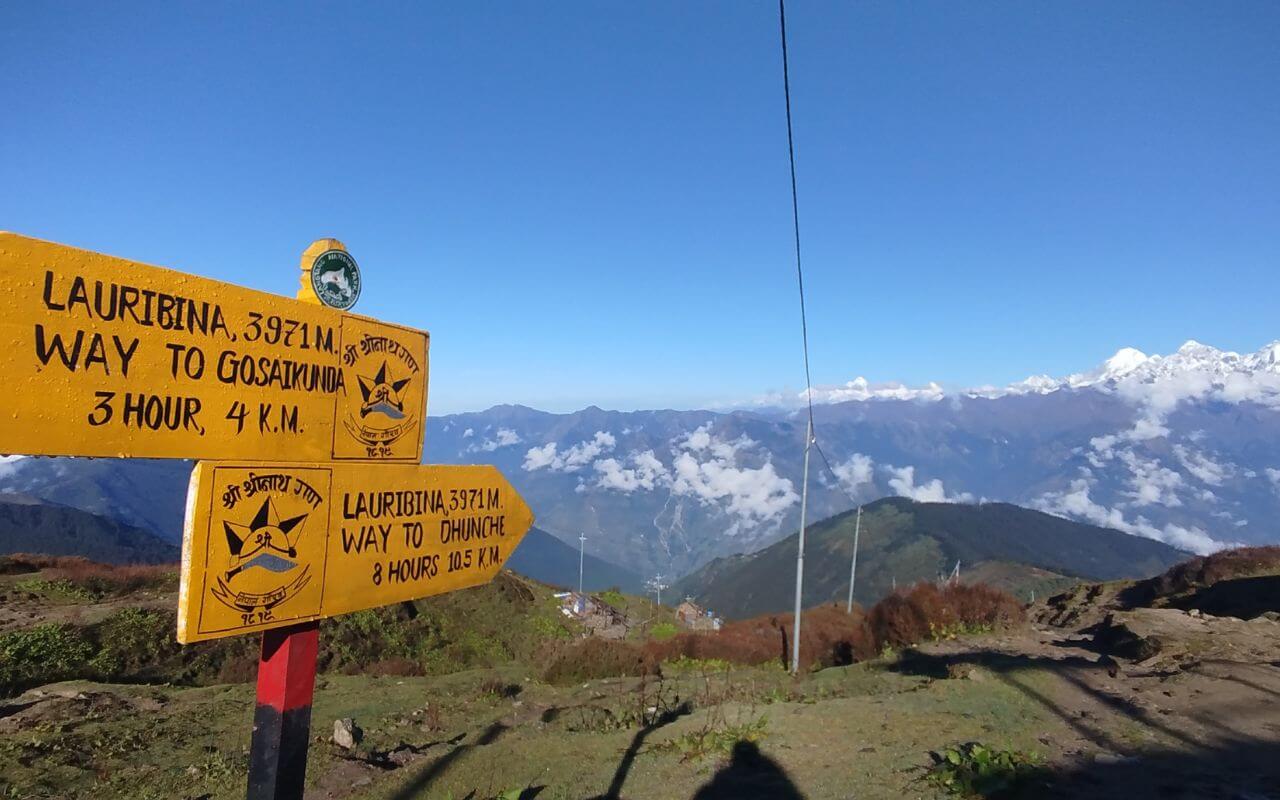Many people got confused during the Gosaikunda Trek, whether there were enough tea houses or not. Let me answer this, there are enough tea houses that offer trekkers warm beds, basic meals, and a chance to connect with local culture without carrying tents. Booking tea houses is usually flexible and first-come, first-served, but during peak season, it’s wise to reserve ahead to fully enjoy this bucket-list Himalayan adventure.
Gosaikunda Trek Tea Houses: Accommodation Options Along the Route
Table of Contents
Introduction: Tea House Trekking in the Gosaikunda Region
The moment you hear of trekking in the Himalayas, a tea house pops up in your mind everywhere, but what are tea houses? Simply put, they are simple lodges along trekking routes, giving trekkers a hot bed, plain food, and stuff needed to get through high-altitude nights.
They are tiny family-owned lodges that are the backbone of trekking culture in Nepal, especially in remote locations like the Gosaikunda region.
One of the greatest benefits of a tea house trek to Gosaikunda is that you don't have to carry cumbersome tents or cooking gear. Everything you need, a bed, a dal bhat plate, and a steaming hot tea cup, is within reach every night.
This makes the Gosaikunda Trek simple for anybody to accomplish, lighter, and cheaper for trekkers. For a broader look at the route, check out my detailed Gosaikunda Trek Overview to get the full picture.

Night 1: Dhunche (Altitude: ~2,030m)
Dhunche is the official gateway to the sacred Gosaikunda Lake for most trekkers, nestled at about 2,030 meters. It’s a lively little town where you’ll likely spend your first night, sorting permits, grabbing last-minute snacks, or simply resting after the drive from Kathmandu.
One of the best things about Dhunche for trekkers is that there are just so many services. There are numerous lodges, restaurants, ATMs, permit offices, and small shops where you can stock up on toilet paper, batteries, basic medicines, or more chocolate bars.
General choices for a good night's rest here are Hotel Red Panda, Lama Guesthouse, Buddha Hotel, and so on, all offering plain but hygienic rooms and nourishing meals. For the full trekking schedule, our Gosaikunda Trek Itinerary discusses why Dhunche is the natural starting point.
Night 2: Chandanbari / Sing Gompa (Altitude: ~3,330m)
After your first night, you’ll ascend through lush pine and rhododendron forests to reach Chandanbari, also known as Sing Gompa, at around 3,330 meters. This peaceful forest hamlet is famous for its serene monastery and its quaint cheese factory, the perfect cultural pit stop.
An overnight stay here is highly recommended for acclimatization. The gradual climb gives your body time to adapt to the rising altitude, reducing the risk of AMS (Acute Mountain Sickness) afterwards.
When it comes to tea houses, trekkers prefer staying at Hotel Yak & Nak, Peaceful Guesthouse, or Sing Gompa Lodge for their welcoming hospitality and good food. Culturally inclined people, do consult my guide on Tamang and Sherpa Culture on the Gosaikunda Trail, an excellent way to experience this fascinating village overnight stop.

Night 3: Laurebina (Altitude: ~3,910m)
On the third night, most trekkers reach as far as Laurebina, at about 3,910 meters. This leg treats you with grand views in every direction of Ganesh Himal, Langtang Lirung, and the other Himalayan giants. Some say this is when the trek truly starts to become enchanting.
Laurebina is actually only an assortment of a handful of small guesthouses as opposed to an entire village, so make an early reservation or arrive early before the holidaymakers in high season. It is quickly booked up, especially in October-November and during festival periods.
Two of the safest bets in this area are Laurebina Guesthouse and Panorama Lodge, both of which have incredible views of the sunrise if you wake up early enough.
Because this stop is so crucial for gaining altitude healthily and safely, make sure to read my post on the Gosaikunda Trek Difficulty Level for tips on staying healthy and avoiding altitude sickness.

Night 4: Gosaikunda (Altitude: ~4,380m)
Spending a night at Gosaikunda Lake itself is the pilgrims' climax for most trekkers. At an altitude of about 4,380 meters, the sacred lake draws the pilgrims as well as trekkers alike, all eager to witness its glinting waters at sunrise and sunset.
Here, the tea houses are few and basic; they are filled with ease, especially during Janai Purnima, the major festival when thousands of pilgrims make the trek to take a holy dip.
Two known options here are Gosaikunda Guest House and Lakeside Lodge, both simple but with unbeatable views right at the lake’s edge. If you’re planning to experience the sacred energy of this spot, check out our guide to the Janai Purnima Festival at Gosaikunda for timing your trek right.
Optional Night 5: Tharepati (if returning via Helambu)
For the trekkers who want to continue the trek or loop back via the Helambu trail, an overnight at Tharepati is a serene means of splitting the descent. It is situated on the lesser-used route that passes between Gosaikunda and Helambu and is therefore ideal for trekkers who wish to be alone. The lodges here are peaceful and see far fewer crowds than the main Gosaikunda stops, so you’ll get a good night’s sleep and enjoy the tranquil forests and ridge-line views.
Recommended tea houses include Tharepati Guest House and Ganga Lodge, both of which offer the bare essentials in a quieter setting. To learn more about this non-touristy trail, see our Gosaikunda via Helambu or Langtang and decide which route is best for your itinerary.
Tea House Facilities: What to Expect
When you're at a tea house during the Gosaikunda Trek, don't get your hopes up: minimalist wooden rooms, twin beds draped with blankets, and typically shared squat toilets or rudimentary Western-style bathrooms.
Hot showers are usually available but at an additional expense, and they are not always steaming hot if you arrive late! Charging your devices will usually be at some cost, so bring a power bank if you require your phone or camera.
Menus are simple but satisfying, highlighting Nepali favorites like dal bhat, noodles, momos, and tea. Beyond Dhunche and Sing Gompa, don't expect a stable internet connection; part of the charm of the trek is to unplug for a few days.
For your proper backpack, read our guide about the ultimate packing list for the Gosaikunda Trek.
How to Book Tea Houses & When to Reserve
In general, tea houses along the Gosaikunda Trek are first-come, first-served; just show up, bargain for a price, and get ready for the evening. That's okay for slower months.
But during the high trekking season of October–November and March–May, it is advisable to book your second or third overnight accommodation in advance, for example, Chandanbari or Gosaikunda itself. There is not much room, and you don't want to have to hike for some time.
If you are on a portered or guided trek, they can most likely call in advance and book a room. To make it a no-hassle trek, contact us to Plan Your Gosaikunda Adventure. We can help plan trekking packages, local guides, and accommodations so you can focus on the trail, not the hassle.
Conclusion
A trek to Gosaikunda is a bucket-list trip, and the trailside tea houses mean it's available to anyone to enjoy high Himalayan trekking without carrying tents and cook pots. From the crowded trailhead at Dhunche to the sacred stillness of the lake itself, each place along the way gives you a warm place to stretch your legs, share stories, and wake up prepared for the next stretch.
Whether on your own, with groups, or with a local guide, night-by-night tea house trekking makes your trek safe, comfortable, and memorable.

.webp)

.webp)
.webp)
.webp)